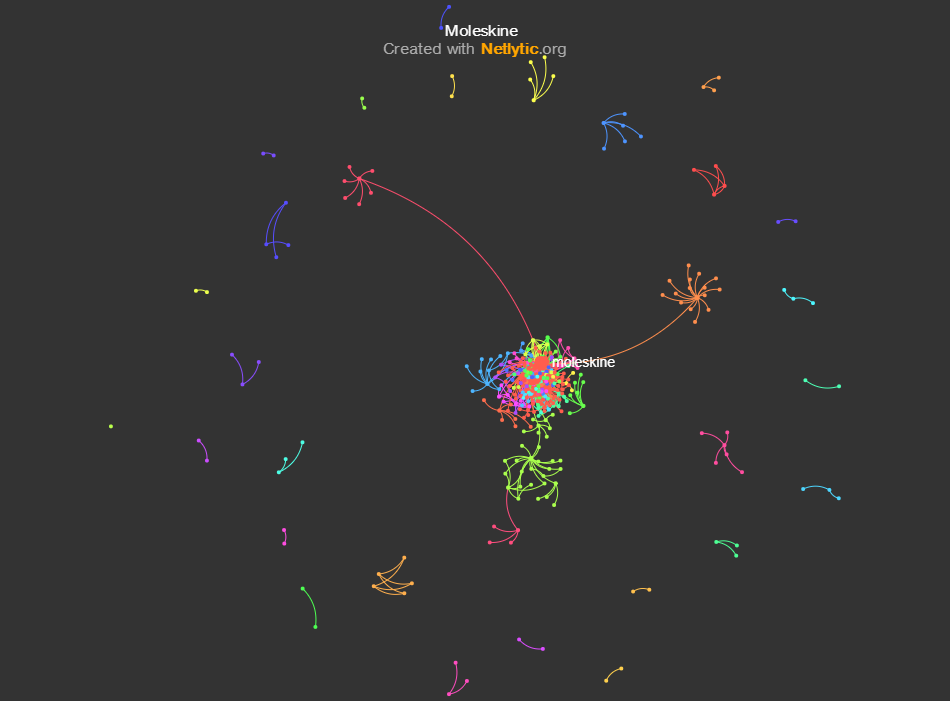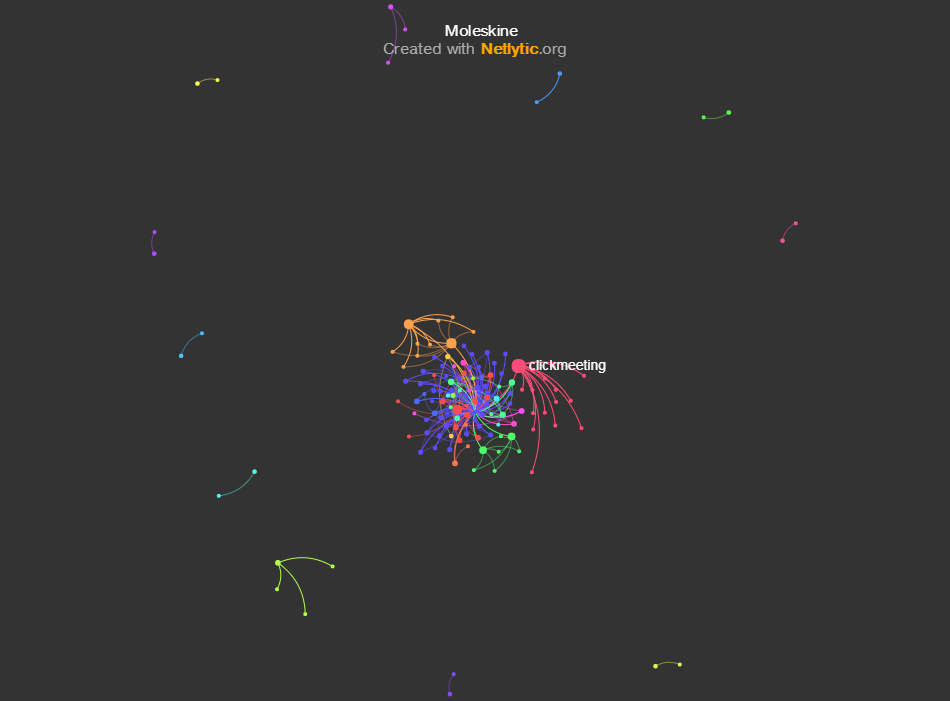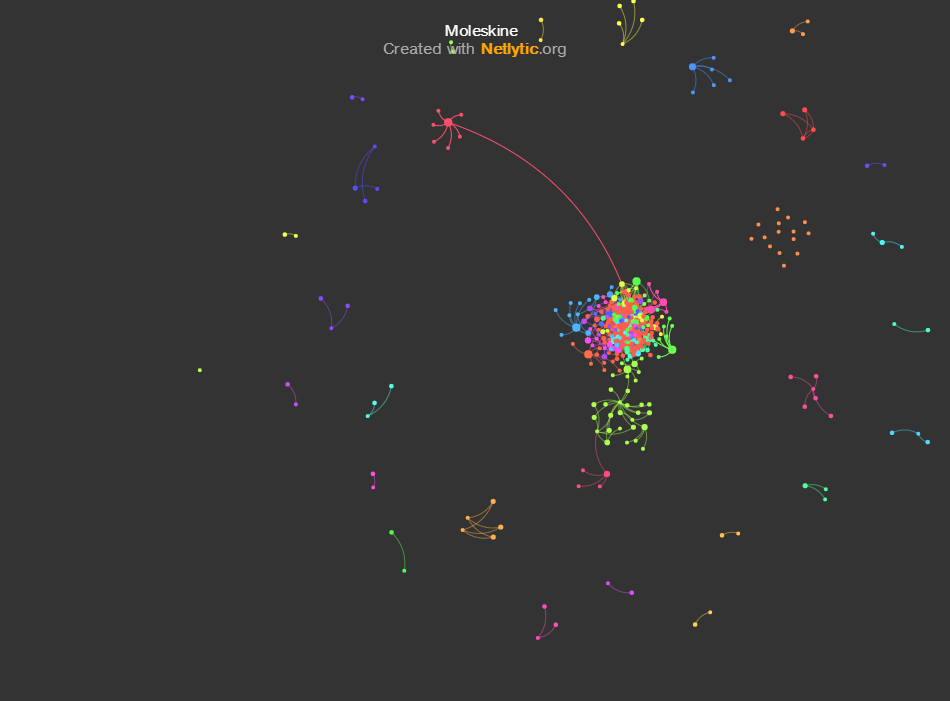For this assignment, name network and chain network analysis of @moleskine Twitter data were conducted. Overall, network analysis is intended to visualize the relationship patterns among different users (Netlytic, 2015). It incorporates two basic components: nodes, which represent users, and edges, which represent connections among them. During visualization, nodes take the form of dots, while edges take the form of lines. Name networks show who mentioned whom, and @moleskine network (Figure 1) comprised 846 names and 673 ties. Chain networks demonstrate who replied to whom, and this @moleskine network (Figure 2) consisted of 260 links.


The presented name and chain networks are slightly different regarding structure. Firstly, the number of edges is higher in name network, which means that users tend to mention @moleskine in their messages more often than engage in direct communication with it. There is also a more significant number of name clusters that are not tied to the central node in this network (those users mentioned Moleskine through #).
However, the biggest node clusters seem to be more centralized in chain network, which means “there are a few central participants who dominate the flow of information” (Netlytic, 2018, para. 10). At the same time, considering the difference in the number of included nodes, it is possible to say that the level of reciprocity among users in two networks is approximately the same.
As it was mentioned above, Moleskine is the most influential node within both indegree-based networks. It mainly happens due to the popularity of the company as a brand. Other users frequently mention it in their messages because they like to share experiences related to Moleskine products. As for outdegree representations, @clickmeeting is the most influential in chain network (Figure 3).
It is a company specialized in providing webinar services to other businesses. @clickmeeting’s high outdegree value is not surprising, and it is possible to presume that the company mentions other users in messages and replies to them to increase its media presence and consolidate rapport with partners/customers (Vega, 2017). In name network, @angela24192678 and @ZBITDA are among those with the highest outdegree values (7) and the lowest indegree rates (0) (Figure 4).
These are the personal pages of users, and their centrality values can be primarily defined by the overall character of their social media activity. These users frequently retweet other users’ posts and share a broad range of experiences with followers. At the same time, their following-follower ratio is disproportionate, which means they may be liked and mentioned by others less.


References
Netlytic. (2015). Netlytic network analysis pt 1 [Video file]. Web.
Netlytic. (2018). Network analysis / visualization. Web.
Vega, S. (2017). 5 tips for responding to customer mentions on Twitter. Web.